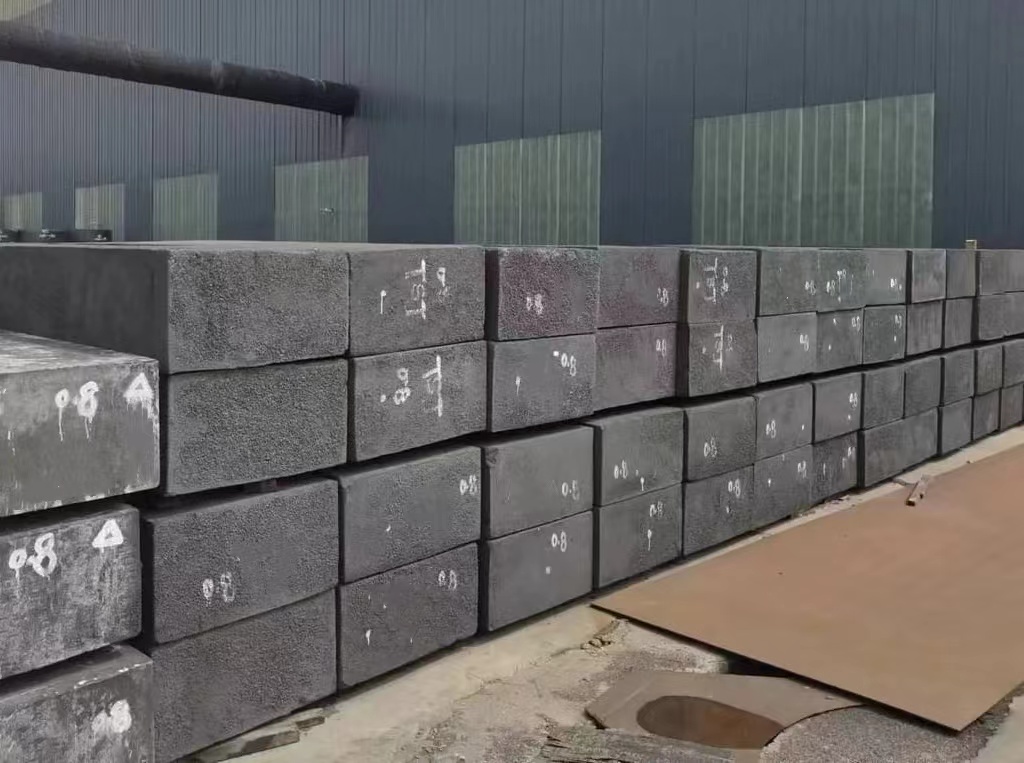The production process of graphite blocks includes raw material mixing, pressing, roasting, impregnation, and graphitization. Let’s take a closer look at each production step.
Table of Contents
ToggleRaw materials
Includes petroleum coke, needle coke, and coal tar. Petroleum coke is carbon and usually has a low ash content. It is the main raw material for producing artificial graphite products. Needle coke has a low thermal expansion coefficient and is easily graphitized. Coal tar is used as a binder and impregnating agent.
Mixing and kneading
The large pieces of calcined petroleum coke and needle coke are crushed, ground, and sieved. Then, a certain amount of binder is used to mix and mix evenly for use.
Molding
The kneaded blank is extruded into a rectangular shape in the molding equipment. At this time, the product not only has a shape and size, but also has a certain density and strength.
Roasting
The roasting cycle is relatively long, generally about 22-30 days. During this process, the coal tar in the green blank is coked and 10% of the volatile matter is removed. The physical and chemical properties of the graphite blank change, and the density and resistance decrease. And its mechanical strength is greatly improved.
Usually, isostatic graphite needs to be roasted three times to increase its volume density.
Impregnation
This process is to put the green body into a pressure vessel, and under certain temperature and pressure conditions, the liquid impregnant is deeply inserted into the gaps of the product. The purpose is to reduce the porosity, increase the density and mechanical strength, and improve the electrical and thermal conductivity.
Graphitization
The high-temperature treatment process of heating the blank in a graphitization furnace at more than 2300 degrees Celsius. Convert amorphous carbon into an ordered graphite crystalline structure.
The purpose is to improve the electrical conductivity and thermal conductivity of carbon materials. At the same time, improve chemical stability. It is important to remove impurities and improve purity.
Quality inspection
First, knock on the appearance to see if there are cracks. Secondly, check whether the density and resistance meet the requirements.
Machining
The product is cut, turned and polished, etc., and processed into finished products according to customer requirements.

